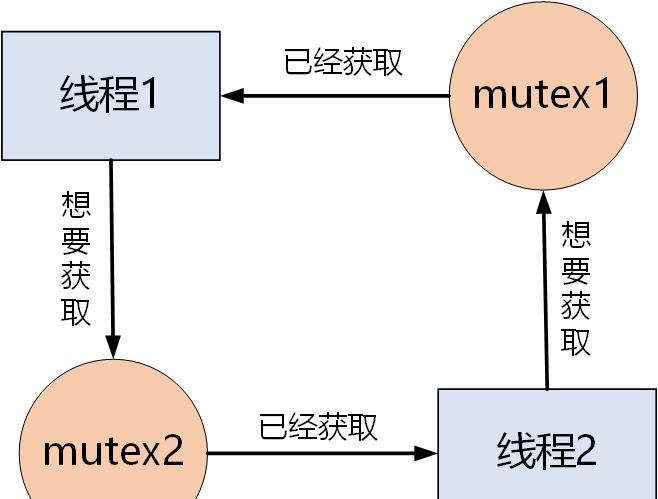
Linux线程同步方法大揭秘!
时间:2023-05-12 来源:网络 人气:
线程同步是多线程编程中的一个重要概念,它解决了多个线程同时访问共享资源时可能出现的问题。在Linux系统下,实现线程同步有多种方法。本文将从互斥锁、条件变量和信号量三个方面,详细介绍Linux下实现线程同步的具体方法。
互斥锁
互斥锁是一种常用的线程同步方法。它通过对共享资源的加锁和释放锁来控制多个线程之间的访问顺序。在Linux系统中,互斥锁通过pthread_mutex_t类型来实现。
下面是一个简单的互斥锁示例代码:
线程通信和同步linux_数字通信系统同步有那些方法_线程同步的方法有哪些?Linux下实现线程同步的三[荐]
c
#include
#include
pthread_mutex_tmutex=PTHREAD_MUTEX_INITIALIZER;
intshared_data=0;
void*thread_function(void*arg){
pthread_mutex_lock(&mutex);
shared_data++;
printf("Thread%d:shared_data=%d\n",(int)arg,shared_data);
pthread_mutex_unlock(&mutex);
returnNULL;
}
intmain(){
pthread_tthread1,thread2;
pthread_create(&thread1,NULL,thread_function,(void*)1);
pthread_create(&thread2,NULL,thread_function,(void*)2);
pthread_join(thread1,NULL);
pthread_join(thread2,NULL);
return0;
}
在上述代码中,我们定义了一个互斥锁mutex,并通过pthread_mutex_lock和pthread_mutex_unlock函数对互斥锁进行加锁和释放锁的操作。这样线程同步的方法有哪些?Linux下实现线程同步的三[荐],在多个线程同时访问共享资源时,只有一个线程能够获得互斥锁,其他线程需要等待该线程释放互斥锁后才能访问共享资源。
条件变量
线程通信和同步linux_线程同步的方法有哪些?Linux下实现线程同步的三[荐]_数字通信系统同步有那些方法
条件变量是一种基于互斥锁的线程同步方法。它通过等待和唤醒机制来实现多个线程之间的协调。在Linux系统中,条件变量通过pthread_cond_t类型来实现。
下面是一个简单的条件变量示例代码:
c
#include
#include
#include
pthread_mutex_tmutex=PTHREAD_MUTEX_INITIALIZER;
pthread_cond_tcond=PTHREAD_COND_INITIALIZER;
intshared_data=0;
void*thread_function1(void*arg){
pthread_mutex_lock(&mutex);
while(shared_data==0){
pthread_cond_wait(&cond,&mutex);
}
shared_data--;
printf("Thread1:shared_data=%d\n",shared_data);
pthread_mutex_unlock(&mutex);
returnNULL;
}
void*thread_function2(void*arg){
pthread_mutex_lock(&mutex);
shared_data++;
printf("Thread2:shared_data=%d\n",shared_data);
pthread_cond_signal(&cond);
pthread_mutex_unlock(&mutex);
returnNULL;
}
intmain(){
pthread_tthread1,thread2;
pthread_create(&thread1,NULL,thread_function1,NULL);
pthread_create(&thread2,NULL,thread_function2,NULL);
pthread_join(thread1,NULL);
pthread_join(thread2,NULL);
return0;
}
线程同步的方法有哪些?Linux下实现线程同步的三[荐]_线程通信和同步linux_数字通信系统同步有那些方法
在上述代码中,我们定义了一个条件变量cond,并通过pthread_cond_wait和pthread_cond_signal函数来实现线程之间的等待和唤醒机制。当线程1发现共享资源为0时,它会调用pthread_cond_wait函数进入等待状态,直到线程2对共享资源进行修改并调用pthread_cond_signal函数唤醒线程1。
信号量
信号量是一种经典的线程同步方法。它通过计数器来实现多个线程之间的同步和互斥。在Linux系统中,信号量通过sem_t类型来实现。
线程同步的方法有哪些?Linux下实现线程同步的三[荐]_数字通信系统同步有那些方法_线程通信和同步linux
下面是一个简单的信号量示例代码:
c
#include
#include
#include
#include
sem_tsemaphore;
intshared_data=0;
void*thread_function1(void*arg){
sem_wait(&semaphore);
shared_data--;
printf("Thread1:shared_data=%d\n",shared_data);
sem_post(&semaphore);
returnNULL;
}
void*thread_function2(void*arg){
sem_wait(&semaphore);
shared_data++;
printf("Thread2:shared_data=%d\n",shared_data);
sem_post(&semaphore);
returnNULL;
}
intmain(){
sem_init(&semaphore,0,1);
pthread_tthread1,thread2;
pthread_create(&thread1,NULL,thread_function1,NULL);
pthread_create(&thread2,NULL,thread_function2,NULL);
pthread_join(thread1,NULL);
pthread_join(thread2,NULL);
sem_destroy(&semaphore);
return0;
}
在上述代码中线程同步的方法有哪些?Linux下实现线程同步的三[荐],我们定义了一个信号量semaphore,并通过sem_wait和sem_post函数来实现线程之间的同步和互斥。当线程1调用sem_wait函数时,它会等待信号量的值变为正数,并将信号量的值减一,从而实现对共享资源的访问;当线程2调用sem_post函数时,它会将信号量的值加一,从而唤醒等待该信号量的线程。
线程通信和同步linux_线程同步的方法有哪些?Linux下实现线程同步的三[荐]_数字通信系统同步有那些方法
总结
本文从互斥锁、条件变量和信号量三个方面,详细介绍了Linux下实现线程同步的具体方法。在多线程编程中,正确使用线程同步方法可以避免多个线程之间对共享资源的竞争,提高程序的并发性能。
最后,如果你是游戏开发者或爱好者,可以关注我们的游戏公众号“游戏玩家”,获取最新最热门的游戏资讯和攻略。

相关推荐
教程资讯
教程资讯排行

系统教程
- 1 ecos 安装-ECOS 安装的爱恨情仇:一场与电脑的恋爱之旅
- 2 北京市监控员招聘:眼观六路耳听八方,责任重大充满挑战
- 3 php冒泡排序的几种写法-探索 PHP 中的冒泡排序:编程艺术与心情表达的完美结合
- 4 汽车电控系统结构-汽车电控系统:ECU 与传感器的完美结合,让驾驶更智能
- 5 gtaiv缺少xlive.dll-GTAIV 游戏无法运行,XLive.DLL 文件丢失,玩家苦寻解
- 6 crisis公安机动百度云-危机时刻,公安机动部队与百度云的紧密合作,守护安全
- 7 刺客信条枭雄突然停止-玩刺客信条:枭雄时游戏突然停止,玩家心情跌入谷底
- 8 上海专业数据恢复,让你不再为丢失数据而烦恼
- 9 冠心病护理措施-呵护心脏,从饮食、运动和情绪管理开始,远离冠心病
- 10 分区魔术师使用-分区魔术师:让电脑硬盘井井有条的神奇工具
-
标签arclist报错:指定属性 typeid 的栏目ID不存在。












